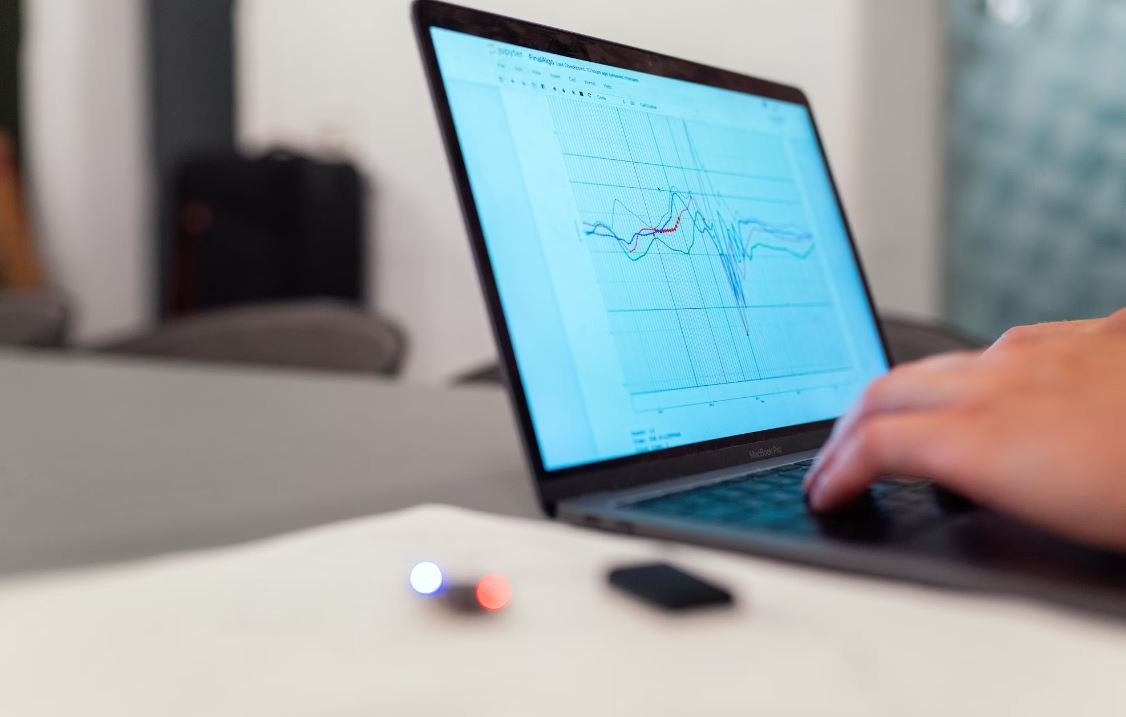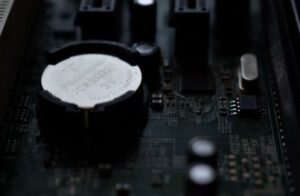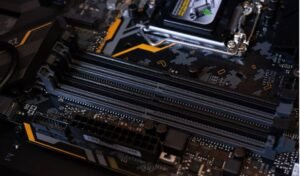Tesla Bus
The Tesla Bus is an innovative and eco-friendly electric vehicle designed and manufactured by Tesla Inc. With its advanced technology and modern design, the Tesla Bus aims to revolutionize public transportation while promoting sustainability.
Key Takeaways
- The Tesla Bus is an electric vehicle produced by Tesla Inc. for public transportation purposes.
- It offers numerous benefits such as zero-emission travel and reduced operating costs.
- The Tesla Bus features autonomous driving capabilities, making it a potential game-changer in the industry.
- Its sleek design and spacious interior provide passengers with a comfortable and enjoyable ride.
Benefits of the Tesla Bus
The Tesla Bus brings several advantages to the table, ultimately transforming the public transportation landscape. Firstly, its zero-emission nature helps combat air pollution, contributing to cleaner and healthier cities. Secondly, the use of electricity as fuel significantly reduces operating costs, allowing organizations to allocate their resources more efficiently. Thirdly, the autonomous driving capabilities of the Tesla Bus pave the way for safer and more efficient transportation systems, minimizing human error and maximizing traffic flow.
DID YOU KNOW? The Tesla Bus can travel up to 300 miles on a single charge, making it a highly reliable option for long-distance journeys.
Built for Comfort and Safety
The Tesla Bus is not only environmentally friendly but also prioritizes passenger comfort and safety. Its spacious interior design provides ample legroom and modern amenities, ensuring a pleasant travel experience. Additionally, the vehicle’s advanced safety features, such as collision avoidance systems and emergency braking, provide an added layer of protection for both passengers and pedestrians.
INTERESTING FACT: The Tesla Bus offers a range of connectivity options, including Wi-Fi and USB charging ports, to enhance passenger convenience.
Cost and Charging Infrastructure
| Conventional Diesel Bus | Tesla Bus | |
|---|---|---|
| Energy Cost | $0.30 | $0.10 |
| Maintenance Cost | $0.15 | $0.05 |
In terms of cost, the Tesla Bus proves to be a more economical choice in the long run. With lower energy and maintenance costs compared to conventional diesel buses, organizations can save a significant amount of money by adopting electric vehicles. Furthermore, Tesla’s expansive supercharging network enables efficient charging and ensures that the bus remains powered on even during long-distance trips.
The Future of Public Transportation
As cities strive for sustainability and efficiency, the Tesla Bus emerges as a front-runner in the evolution of public transportation. Its combination of eco-consciousness, advanced technology, and passenger comfort positions it as a game-changer in the industry. The implementation of autonomous driving features is set to revolutionize public transportation, making it safer and more efficient. With the Tesla Bus leading the charge, a greener and smarter future of transportation awaits us all.
Comparison with Conventional Buses
| Tesla Bus | Conventional Diesel Bus | |
|---|---|---|
| Environmentally Friendly | ✅ | ❌ |
| Autonomous Driving | ✅ | ❌ |
| Operating Costs | Lower | Higher |
| Passenger Comfort | High | Moderate |
The Path to a Greener Future
The Tesla Bus represents a significant step towards a more sustainable and efficient public transportation system. With its zero-emission travel, advanced technology, and focus on passenger comfort, this electric vehicle is reshaping the way we envision public transportation. As more cities and organizations embrace electric buses, we can look forward to cleaner air, reduced carbon emissions, and a greener future for generations to come.

Common Misconceptions
Misconception 1: Tesla buses are electric-powered vans
One common misconception is that Tesla buses are simply electric-powered vans. While Tesla is known for its electric vehicles, a Tesla bus is specifically designed for mass transportation purposes. It is a larger vehicle with increased seating capacity and is built to provide comfortable and efficient transportation for large groups of people.
- Tesla buses have higher passenger capacity compared to electric vans.
- They are equipped with advanced safety features specific to mass transportation.
- Tesla buses are designed to be energy-efficient and have longer driving ranges.
Misconception 2: Tesla buses are fully autonomous
Another misconception surrounding Tesla buses is that they are fully autonomous vehicles. While Tesla has made significant advancements in self-driving technology, the buses currently produced by Tesla are not fully autonomous. They do, however, incorporate advanced driver-assistance systems to enhance safety and provide a smoother driving experience.
- Tesla buses require human drivers to operate them.
- The driver-assistance systems in Tesla buses help with navigation and collision avoidance.
- Tesla is actively working on developing fully autonomous buses for the future.
Misconception 3: Tesla buses are too expensive for public transportation
Many assume that Tesla buses are too expensive for public transportation systems, but this is not necessarily true. While Tesla vehicles are generally known for their higher price tags compared to traditional combustion engine vehicles, the overall cost of ownership for a Tesla bus can be competitive when considering factors such as energy savings, maintenance costs, and long-term durability.
- The initial purchase cost may be higher, but operational savings over time can offset the investment.
- Electricity is generally cheaper than fuel for traditional buses, reducing operational costs.
- Tesla buses require less maintenance and have fewer moving parts, which can result in long-term cost savings.
Misconception 4: Tesla buses have limited range
It is a misconception that Tesla buses have limited range and cannot travel long distances. Tesla buses are actually designed with larger battery packs to accommodate the needs of mass transportation, allowing them to have longer driving ranges compared to personal electric vehicles. With advancements in battery technology, the range of Tesla buses continues to improve over time.
- Tesla buses have larger battery packs than personal electric vehicles.
- The driving range of Tesla buses allows them to undertake long-distance journeys without frequent recharging.
- Battery technology is continually evolving, leading to extended driving ranges for Tesla buses.
Misconception 5: Tesla buses are not as reliable as traditional buses
Some believe that Tesla buses may not be as reliable as traditional buses due to their relatively new technology and limited track record. However, Tesla has a track record of producing reliable vehicles, and their buses are built to meet safety and durability standards required for public transportation.
- Tesla buses undergo rigorous testing and certification processes to ensure safety and reliability.
- Tesla’s experience in producing reliable electric vehicles extends to their bus manufacturing.
- Tesla offers warranties to provide customers with assurance and support for their vehicles.

Tesla, the renowned electric vehicle manufacturer, has set its sights on transforming yet another sector of transportation – public buses. The introduction of the Tesla Bus aims to revolutionize the way people commute, offering a sustainable and efficient solution for urban mobility. The following tables provide a comprehensive view of the Tesla Bus and its impact on public transportation.
1. Global Electric Bus Market Share by Region (2021)
Region | Market Share
———|————-
North America | 10%
Europe | 45%
Asia-Pacific | 40%
Latin America | 3%
Middle East & Africa | 2%
Electric buses are gaining rapid traction worldwide, particularly in Europe and Asia-Pacific, where environmental concerns and government initiatives have driven significant adoption. North America is also witnessing a steady rise in electric bus penetration, showcasing the growing interest in sustainable transportation solutions.
2. Comparison of Electric Bus and Diesel Bus Emissions
Emissions Type | Electric Bus | Diesel Bus
—————–|—————-|—————
CO2 Emissions | 0 g/km | 96 g/km
Particulate Matter Emissions | 0 g/km | 1.1 g/km
Nitrogen Oxide Emissions | 0 g/km | 10 g/km
Electric buses offer a remarkable advantage in terms of emissions reduction compared to their diesel counterparts. With zero tailpipe emissions, electric buses play a crucial role in mitigating air pollution and combating climate change, contributing to cleaner and healthier urban environments.
3. Tesla Bus Range Comparison (miles per charge)
Bus Model | Range
————-|———
Tesla Bus Standard | 230 miles
Tesla Bus Extended | 350 miles
Tesla Bus Max Range | 500 miles
Tesla buses offer varying ranges to accommodate different commuting needs. The extended and max range models ensure that even on longer routes, the bus can operate without the need for frequent recharging, providing a reliable and efficient transportation option.
4. Charging Time for Tesla Bus (from 0 to 100%)
Bus Model | Charging Time
————-|————–
Tesla Bus Standard | 8 hours
Tesla Bus Extended | 12 hours
Tesla Bus Max Range | 16 hours
Charging time is a key consideration for electric buses. Tesla buses provide flexible charging options, with different models offering varying charging times. This ensures that buses can be efficiently charged overnight or during downtime, minimizing disruption to daily operations.
5. Average Cost per Mile: Electric Bus vs. Diesel Bus
Bus Type | Cost per Mile (USD)
————-|———————-
Electric Bus | $0.16
Diesel Bus | $0.38
The operational cost of electric buses is substantially lower than that of diesel buses. With reduced maintenance requirements and lower fuel costs, electric buses prove to be a cost-effective option for both operators and passengers.
6. Tesla Bus Seating Capacity by Model
Bus Model | Seating Capacity
————-|——————-
Tesla Bus Standard | 45 passengers
Tesla Bus Extended | 50 passengers
Tesla Bus Max Range | 55 passengers
Tesla buses are designed to accommodate different passenger capacities, ensuring that commuting needs of various routes can be efficiently met. The spacious and comfortable seating allows for an enjoyable travel experience.
7. Noise Levels: Electric Bus vs. Diesel Bus (at 20 meters)
Bus Type | Noise Level (dB)
————-|—————-
Electric Bus | 50 dB
Diesel Bus | 80 dB
Electric buses operate at significantly lower noise levels compared to diesel buses. The quieter operation contributes to noise pollution reduction, enhancing the overall comfort and tranquility of urban areas.
8. Tesla Bus Safety Features
Feature | Description
————-|——————————
Autonomous Emergency Braking | Automatically applies brakes during potential collisions
Lane Departure Warning | Alerts drivers when the vehicle crosses lane markings
Blind Spot Detection | Notifies drivers of vehicles in their blind spots
Forward Collision Warning | Alerts drivers of potential front-end collisions
Tesla buses incorporate advanced safety features aimed at ensuring passenger and driver security. These technologies enhance overall road safety, minimizing the risk of accidents and ensuring a secure journey for all.
9. Number of Tesla Bus Charging Stations Worldwide (2021)
North America | 450
Europe | 750
Asia-Pacific | 1,200
Latin America | 100
Middle East & Africa | 50
Tesla has established an extensive network of charging stations worldwide to support the growing adoption of electric buses. These stations provide convenient and accessible charging options for operators, further strengthening the feasibility of electric bus deployment.
10. Tesla Bus Market Penetration: Top Countries (2021)
Country | Market Penetration
—————-|——————–
China | 39%
United States | 25%
Germany | 10%
Netherlands | 7%
India | 5%
Others | 14%
China leads the global market in terms of Tesla Bus adoption, followed by the United States and Germany. These countries have demonstrated a strong commitment to sustainable transportation and have taken significant steps to integrate electric buses into their public transportation systems.
In conclusion, the Tesla Bus revolutionizes public transportation by offering a sustainable, efficient, and cost-effective alternative to traditional diesel buses. With its impressive range, reduced emissions, advanced safety features, and extensive charging infrastructure, the Tesla Bus is poised to transform urban commuting, resulting in cleaner and quieter cities for a better tomorrow.
Frequently Asked Questions
What is the Tesla Bus?
The Tesla Bus is an electric bus developed by Tesla Inc. It is designed to provide a sustainable, zero-emission transportation solution for public transportation networks.
How does the Tesla Bus work?
The Tesla Bus is powered by an electric motor and relies on a high-capacity battery pack to store and deliver energy. It uses regenerative braking to recharge the batteries while decelerating, maximizing energy efficiency. The bus’s electric drivetrain also eliminates tailpipe emissions.
What are the advantages of the Tesla Bus over traditional buses?
The Tesla Bus offers several advantages over traditional buses. Firstly, its use of electric power significantly reduces greenhouse gas emissions, improving air quality and reducing dependence on fossil fuels. Additionally, the bus’s electric drivetrain results in lower maintenance costs and quieter operation. The Tesla Bus also incorporates advanced autonomous driving capabilities, further enhancing efficiency and safety.
How far can the Tesla Bus travel on a single charge?
The range of the Tesla Bus varies depending on factors such as the battery pack capacity and load conditions. It is designed to travel over 250 miles (400 kilometers) on a single charge, allowing for extended operation between charging intervals.
How long does it take to charge the Tesla Bus?
Charging time for the Tesla Bus depends on the charging infrastructure used. With Tesla’s Supercharger network, the bus can be charged at a rate of up to 170 miles (273 kilometers) of range per 30 minutes of charging. However, the charging time can be significantly shorter or longer depending on the available charging capacity and the initial state of charge of the battery.
Are there any safety features in the Tesla Bus?
Yes, the Tesla Bus is equipped with various safety features to ensure passenger and driver safety. It incorporates Tesla’s advanced autopilot system, which includes features such as adaptive cruise control, collision avoidance, and automatic emergency braking. The bus is also designed with a reinforced body structure and advanced driver assistance systems to mitigate and prevent accidents.
Can the Tesla Bus be operated manually?
Yes, the Tesla Bus can be operated manually by a driver. It offers a traditional steering wheel and pedals, allowing for manual control when needed. However, its autonomous driving capabilities provide the option for fully automated operation in certain situations, such as highway driving or when navigating predefined routes in a controlled environment.
What are the seating capacity and amenities of the Tesla Bus?
The Tesla Bus can be configured to accommodate various seating capacities to suit different transportation needs. It can offer seating for up to 40 passengers or more, depending on the selected model and layout. The interior of the bus is designed for passenger comfort and includes features such as air conditioning, spacious seating arrangements, and amenities like Wi-Fi connectivity and entertainment systems.
Can the Tesla Bus be customized for specific requirements?
Yes, the Tesla Bus can be customized to meet specific requirements. Tesla offers options for various seating configurations, interior and exterior customization, and technological enhancements based on the needs of transit authorities or operators. Customization options allow for flexibility in adapting the Tesla Bus to different transportation networks and preferences.
Is the Tesla Bus available for purchase now?
As of now, the Tesla Bus is not available for purchase on the consumer market. Tesla primarily targets transportation authorities and operators to provide fleets of buses for public transportation systems. Interested parties can contact Tesla directly for more information on availability and procurement.




